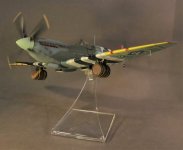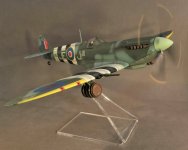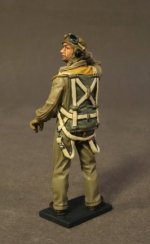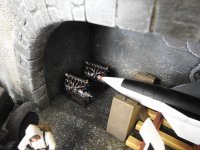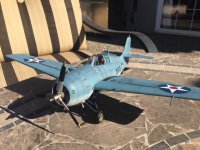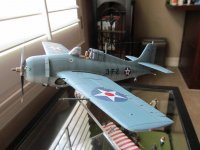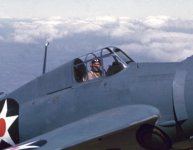NEW RELEASES FOR OCTOBER 2018
THE SECOND WORLD WAR
THE ROYAL AIR FORCE

To keep the many men and machines in fighting shape during the World War II invasion of France, logistics technicians had their work cut out for them. Bombs, bullets, planes and tanks were top priorities, so there was little room for luxury items that would keep the troops in good spirits while fighting .
In the early days after the Normandy invasion of June 1944, the retreating German army were suspected of poisoning the water sources. British and American troops also noticed an acute shortage of alcoholic beverages — namely beer. Many British soldiers complained that a watery cider was the only drink available in recently liberated French towns.
When a British brewery donated gallons of beer for troops on the front, there was no way to get it to the men by conventional means.
Luckily for them, the Royal Air Force was able to solve the problem.
With no room for cargo on their small fighter planes, RAF pilots arrived at a novel solution - using drop tanks to transport beer instead of fuel.
The drop tanks of a Spitfire each carried 45 gallons of gas, meaning a plane could transport 90 gallons of extra liquid.
For the purposes of ferrying beer, ground crews set about steam cleaning the tanks for their special deliveries. These flights became known as "flying pubs" by the troops they served. A few British breweries, such as Heneger and Constable, donated free beer for the RAF to take to the front.
The drop tanks had a serious disadvantage. While they could carry large amounts of beer, the initial runs still tasted of fuel. Even after the tanks had been used several times and lost their fuel taste, they still imparted a metallic flavor to the beer.
To counter this problem, ground crews developed Modification XXX, a change made to the wing pylons of Spitfire Mk. IXs that allowed them to carry actual kegs of beer.
These kegs, often called 'beer bombs,' were standard wooden beer kegs attached under the wing of the Spitfire. Though they carried less beer, it arrived tasting like it just came out of the tap at the pub, chilled by the altitude of the flight over the channel.
To ensure their compatriots remained satisfied, pilots would often return to England for rudimentary maintenance issues or other administrative needs in order to grab another round. As the need for beer increased, all replacement Spitfires and Typhoons being shipped to airfields in France carried 'beer bombs' in their bomb racks to the joy of the thirsty crews manning the airfields.
When the Americans learned of what the British were doing they joined in, even bringing over ice cream for the GIs as well.
As the practice gained popularity, Britain's Custom and Excise Ministry objected and attempted to shut it down. Thankfully by that time, there were more organized official shipments of beer making it to the troops.
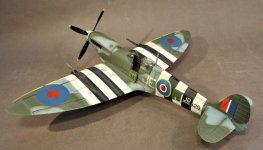
RAF-01
THE SECOND WORLD WAR,
SUPERMARINE SPITFIRE MK.IXc MK329,
W/Commander J. E. JOHNSON,
No.144 WING JUNE 1949
(6pcs)
Air Vice Marshal James Edgar Johnson, CB, CBE, DSO & Two Bars, DFC & Bar (9 March 1915 – 30 January 2001), nicknamed "Johnnie", was a Royal Air Force (RAF) pilot and flying ace.
Johnson was credited with 34 individual victories over enemy aircraft, as well as seven shared victories, three shared probable, 10 damaged, three shared damaged and one destroyed on the ground.
Johnson flew 700 operational sorties and engaged enemy aircraft on 57 occasions.
Included in his list of individual victories were 14 Messerschmitt Bf 109s and 20 Focke-Wulf Fw 190s destroyed making him the most successful RAF ace against the Fw 190. This score made him the highest scoring Western Allied fighter ace against the German Luftwaffe.
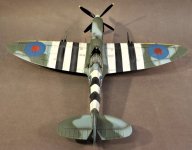
MK329 was used by Johnnie Johnson, which according to his memoirs he flew twice. Rumor has it that he brought beer to his men in Normandy flying MK329. Johnson mentions that Spitfire MK329 was assembled from wrecked airframes and was a mix-and-match airframe, cobbled together out of spare parts.
Johnson scored the bulk of his voctories flying two Spitfires Mk. IX. The first one was EN398 JE-J, in which he shot down 12 aircraft and shared five, plus six damaged while commanding the Kenley Wing.
His second plane , MK392, was an LF Mk.IX, in which his tally increased by another 12 aircraft, plus one shared destroyed on the ground. He was to end the war flying another Spitfire Mk XIVe MV268.
As a Wing Leader Johnson was entitled to personal code letters and his aircraft were always marked JE-J.
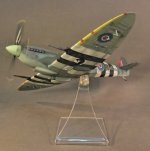

THE SECOND WORLD WAR
THE ROYAL AIR FORCE

To keep the many men and machines in fighting shape during the World War II invasion of France, logistics technicians had their work cut out for them. Bombs, bullets, planes and tanks were top priorities, so there was little room for luxury items that would keep the troops in good spirits while fighting .
In the early days after the Normandy invasion of June 1944, the retreating German army were suspected of poisoning the water sources. British and American troops also noticed an acute shortage of alcoholic beverages — namely beer. Many British soldiers complained that a watery cider was the only drink available in recently liberated French towns.
When a British brewery donated gallons of beer for troops on the front, there was no way to get it to the men by conventional means.
Luckily for them, the Royal Air Force was able to solve the problem.
With no room for cargo on their small fighter planes, RAF pilots arrived at a novel solution - using drop tanks to transport beer instead of fuel.
The drop tanks of a Spitfire each carried 45 gallons of gas, meaning a plane could transport 90 gallons of extra liquid.
For the purposes of ferrying beer, ground crews set about steam cleaning the tanks for their special deliveries. These flights became known as "flying pubs" by the troops they served. A few British breweries, such as Heneger and Constable, donated free beer for the RAF to take to the front.
The drop tanks had a serious disadvantage. While they could carry large amounts of beer, the initial runs still tasted of fuel. Even after the tanks had been used several times and lost their fuel taste, they still imparted a metallic flavor to the beer.
To counter this problem, ground crews developed Modification XXX, a change made to the wing pylons of Spitfire Mk. IXs that allowed them to carry actual kegs of beer.
These kegs, often called 'beer bombs,' were standard wooden beer kegs attached under the wing of the Spitfire. Though they carried less beer, it arrived tasting like it just came out of the tap at the pub, chilled by the altitude of the flight over the channel.
To ensure their compatriots remained satisfied, pilots would often return to England for rudimentary maintenance issues or other administrative needs in order to grab another round. As the need for beer increased, all replacement Spitfires and Typhoons being shipped to airfields in France carried 'beer bombs' in their bomb racks to the joy of the thirsty crews manning the airfields.
When the Americans learned of what the British were doing they joined in, even bringing over ice cream for the GIs as well.
As the practice gained popularity, Britain's Custom and Excise Ministry objected and attempted to shut it down. Thankfully by that time, there were more organized official shipments of beer making it to the troops.

RAF-01
THE SECOND WORLD WAR,
SUPERMARINE SPITFIRE MK.IXc MK329,
W/Commander J. E. JOHNSON,
No.144 WING JUNE 1949
(6pcs)
Air Vice Marshal James Edgar Johnson, CB, CBE, DSO & Two Bars, DFC & Bar (9 March 1915 – 30 January 2001), nicknamed "Johnnie", was a Royal Air Force (RAF) pilot and flying ace.
Johnson was credited with 34 individual victories over enemy aircraft, as well as seven shared victories, three shared probable, 10 damaged, three shared damaged and one destroyed on the ground.
Johnson flew 700 operational sorties and engaged enemy aircraft on 57 occasions.
Included in his list of individual victories were 14 Messerschmitt Bf 109s and 20 Focke-Wulf Fw 190s destroyed making him the most successful RAF ace against the Fw 190. This score made him the highest scoring Western Allied fighter ace against the German Luftwaffe.

MK329 was used by Johnnie Johnson, which according to his memoirs he flew twice. Rumor has it that he brought beer to his men in Normandy flying MK329. Johnson mentions that Spitfire MK329 was assembled from wrecked airframes and was a mix-and-match airframe, cobbled together out of spare parts.
Johnson scored the bulk of his voctories flying two Spitfires Mk. IX. The first one was EN398 JE-J, in which he shot down 12 aircraft and shared five, plus six damaged while commanding the Kenley Wing.
His second plane , MK392, was an LF Mk.IX, in which his tally increased by another 12 aircraft, plus one shared destroyed on the ground. He was to end the war flying another Spitfire Mk XIVe MV268.
As a Wing Leader Johnson was entitled to personal code letters and his aircraft were always marked JE-J.




